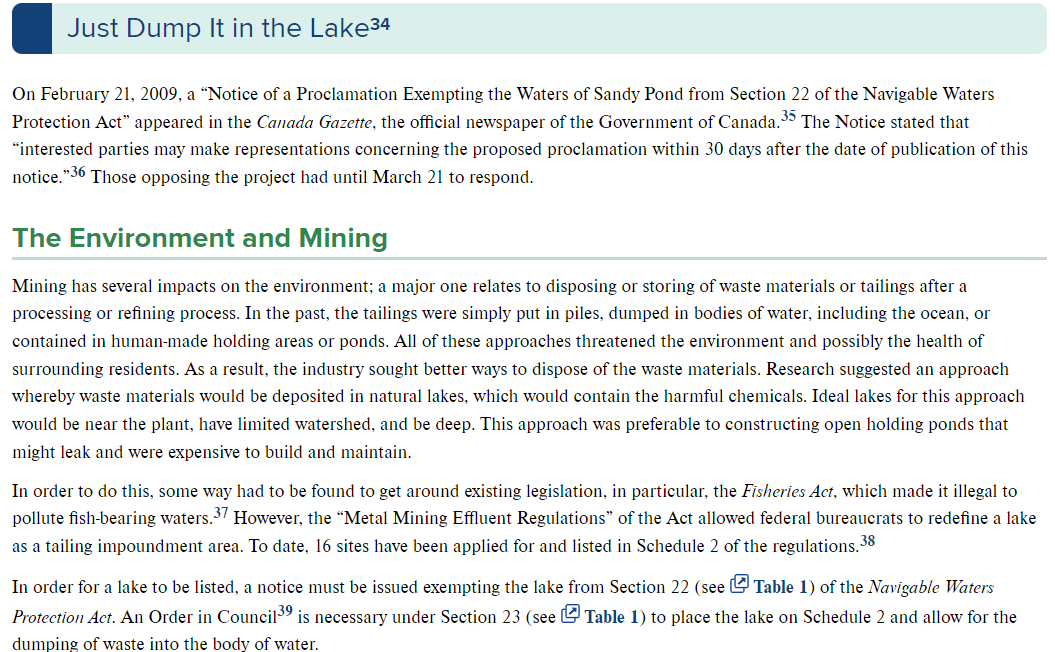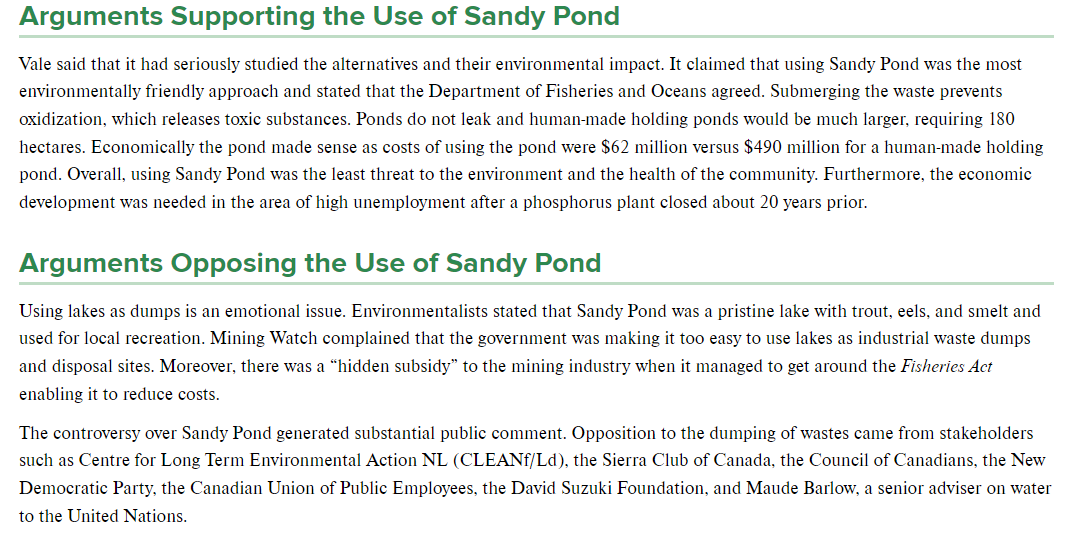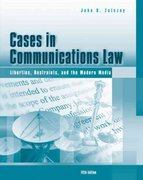Question
Part 1 - Case Questions: 1. What is the name of the government initiative that ensures human rights are upheld by Canadian mining companies? 2.



Part 1 - Case Questions:
1. What is the name of the government initiative that ensures human rights are upheld by Canadian mining companies?
2. Draw a stakeholder matrix for this case, noting the stakeholder names, and matrix quadrant labels.
3. Explain the issues.
4. For each stakeholder, document what each should do to address the issues.
5. Make an argument to justify dumping the tailings into the lake.
6. Make an argument to justify stopping the approval of dumping tailings into the lake.
7. Draw an issue life cycle, place the issue, and provide rationale for your placement. Make suggestions on how to move the issue forward.
Part 2 Recent situation:
1. Research a recent news article on the Alberta Oil Sands Trailing Ponds
2. List your source (the article or articles you read)
3. State the Situational Issue one or two sentences
4. List the Stakeholders
5. State the Ethical Issue that you want to address one or two sentences
6. Based on which stakeholder you choose to represent how would you proceed and why?
Just Dump It in the Lake 34 On February 21, 2009, a "Notice of a Proclamation Exempting the Waters of Sandy Pond from Section 22 of the Navigable Waters Protection Act" appeared in the Canada Gazette, the official newspaper of the Government of Canada. 35 The Notice stated that "interested parties may make representations concerning the proposed proclamation within 30 days after the date of publication of this notice."36 Those opposing the project had until March 21 to respond. The Environment and Mining Mining has several impacts on the environment; a major one relates to disposing or storing of waste materials or tailings after a processing or refining process. In the past, the tailings were simply put in piles, dumped in bodies of water, including the ocean, or contained in human-made holding areas or ponds. All of these approaches threatened the environment and possibly the health of surrounding residents. As a result, the industry sought better ways to dispose of the waste materials. Research suggested an approach whereby waste materials would be deposited in natural lakes, which would contain the harmful chemicals. Ideal lakes for this approach would be near the plant, have limited watershed, and be deep. This approach was preferable to constructing open holding ponds that might leak and were expensive to build and maintain. In order to do this, some way had to be found to get around existing legislation, in particular, the Fisheries Act, which made it illegal to pollute fish-bearing waters. 37 However, the "Metal Mining Effluent Regulations" of the Act allowed federal bureaucrats to redefine a lake as a tailing impoundment area. To date, 16 sites have been applied for and listed in Schedule 2 of the regulations. 38 In order for a lake to be listed, a notice must be issued exempting the lake from Section 22 (see Table 1 ) of the Navigable Waters Protection Act. An Order in Council 39 is necessary under Section 23 (see Table 1) to place the lake on Schedule 2 and allow for the dumping of waste into the body of water. 23. The Governor in Council, when it is shown to the satisfaction of the Governor in Council that the public interest would not be injuriously affected thereby, may, by proclamation, declare any rivers, streams or waters in respect of which sections 21 and 22 apply, or any parts thereof, exempt in whole or in part from the operation of those sections, and may revoke the proclamation. R.S., c. N-19, s. 21. Government Services Canada, 2010. Vale's Sandy Pond Proposal Vale planned construction of a hydromet nickel processing plant at Long Harbour, Newfoundland and Labrador, 100 kilometres west of St. John's. Plant construction was to begin in 2009, and completed by 2012 at an estimated cost of $2.17 billion. It would employ 1,6002,000 persons in the construction stage and about 400-450 full-time employees when in operation. The plant was intended to process 50,000 tonnes of nickel, 3,270 tonnes of copper, and 2,460 tonnes of cobalt annually from ore mined at the company's Voisey Bay mine in NL. The facility required a disposal of tailings plan and the company decided to use Sandy Pond. About 400,000 tonnes of effluent would be dumped in the lake annually. The pond was about 6 kilometres from the plant and covered about 38 hectares. Dams would be constructed to enlarge the holding area to about 78 hectares. Vale was a signatory to the Mining Association of Canada's "Towards Sustainable Mining (TSM)" initiative. 40 The company stated that it accepted responsibility for the environment and acted responsibly. 41 Vale said that it had seriously studied the alternatives and their environmental impact. It claimed that using Sandy Pond was the most environmentally friendly approach and stated that the Department of Fisheries and Oceans agreed. Submerging the waste prevents oxidization, which releases toxic substances. Ponds do not leak and human-made holding ponds would be much larger, requiring 180 hectares. Economically the pond made sense as costs of using the pond were $62 million versus $490 million for a human-made holding pond. Overall, using Sandy Pond was the least threat to the environment and the health of the community. Furthermore, the economic development was needed in the area of high unemployment after a phosphorus plant closed about 20 years prior. Arguments Opposing the Use of Sandy Pond Using lakes as dumps is an emotional issue. Environmentalists stated that Sandy Pond was a pristine lake with trout, eels, and smelt and used for local recreation. Mining Watch complained that the government was making it too easy to use lakes as industrial waste dumps and disposal sites. Moreover, there was a "hidden subsidy" to the mining industry when it managed to get around the Fisheries Act enabling it to reduce costs. The controversy over Sandy Pond generated substantial public comment. Opposition to the dumping of wastes came from stakeholders such as Centre for Long Term Environmental Action NL (CLEANf/Ld), the Sierra Club of Canada, the Council of Canadians, the New Democratic Party, the Canadian Union of Public Employees, the David Suzuki Foundation, and Maude Barlow, a senior adviser on water to the United NationsStep by Step Solution
There are 3 Steps involved in it
Step: 1

Get Instant Access to Expert-Tailored Solutions
See step-by-step solutions with expert insights and AI powered tools for academic success
Step: 2

Step: 3

Ace Your Homework with AI
Get the answers you need in no time with our AI-driven, step-by-step assistance
Get Started


